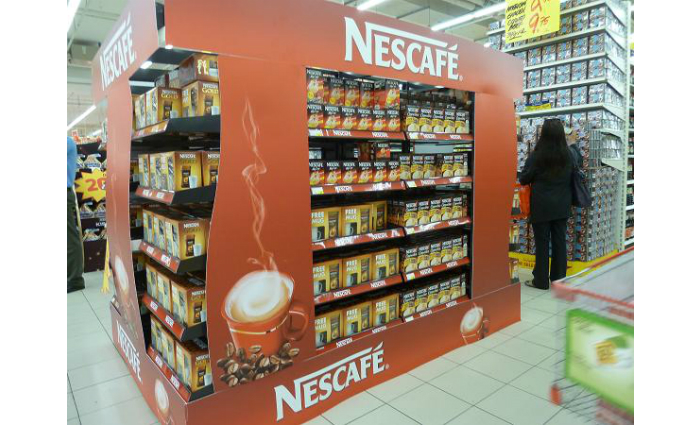
Brands are shifting ad dollars towards printed point-of-sale as Coles and Woolworths ask their suppliers to give them more ammunition in the supermarket wars, with wide format printers reaping the rewards.
ProPrint spoke to a trio of printers, Active Display, Billboard Media and Flash Graphics, all of whom are riding the wave.
Ad spends across all media channels except POS for food, produce and dairy brands in 2014 were down almost 10 per cent on 2013, according to figures from the Standard Media Index, while printers are reporting as much as 10 per cent higher sales for in-store advertising.
TV advertising was hit the hardest, with spends down 13 per cent for metro channels. Overall spending for household supplies was steady, but brands spent 15 per cent less in regional TV and 10.2 per cent less in pay TV.
The two big supermarket chains are engaged in a long, bloody, and expensive price war and marketing experts say they are leaning on suppliers to spend more on in-store advertising so they don’t have to.
Since marketing budgets aren’t getting any bigger, this comes out of other media and into print, to the joy of wide format retail printers around the country.
[Related: More wide format news]
Active Display managing director David Gittus says this trend combined with the wider fragmentation of traditional media was one of media agency STW’s key motivations for buying his company last year.
“Traditional media like TV has been split by outdoor, which is having a bit of a purple patch, and social media, so media companies are diversifying to adapt,” he says.
Gittus says Active’s revenue from in-store supermarket advertising jobs jumped about 10 per cent last year and he agrees retailers are a big part of the push.
“This takes money away from traditional marketing, but we are also seeing a creative tie in between all kinds of media – such as using online combined with augmented reality on point-of-sale with links to discounts and special offers,” he says.
“It is keeping point-of-sale relevant, and it is important as the last message consumers see before they buy – poor point-of-sale can undo the work of other media if it doesn’t stand out.”
Gittus says cardboard is also seeing a resurgence with more display stands inside supermarkets and he expects the trend to stick, as point-of-sale allows for a more tailored message that can be updated quickly.
“Brand leaders are also increasingly happy to grow sales for whole categories not just their own. All brands will benefit but especially them if they have good market share, and it is great for us as their printers,” he says.
Billboard Media sales director David Zeunert is also seeing big growth in supermarket point-of-sale and says the company’s two HP Scitex FB10000s are flat out for weeks at a time printing every new promotion.
“We are working pretty hard. You only have to walk into the supermarkets to see how much more advertising there is now, and with digital printing they can change them quickly,” he says.
Flash Graphics director Frederick Uden says his food and cosmetics brands are ordering ‘quite a bit’ more in-store work and are seeing good return on investment from fast turnaround digital print.
“They are moving from screen to digital which gives them more convenience, lower cost and being able to change campaigns fast,” he says.
“They try something and it works, and once they get used to it they do more.”
Meanwhile, Magnify Media director John Duplock says spending by both supermarkets on in-store advertising has stayed consistent, indicating their strategy of leveraging their suppliers’ marketing is working.
Comment below to have your say on this story.
If you have a news story or tip-off, get in touch at editorial@sprinter.com.au.
Sign up to the Sprinter newsletter
